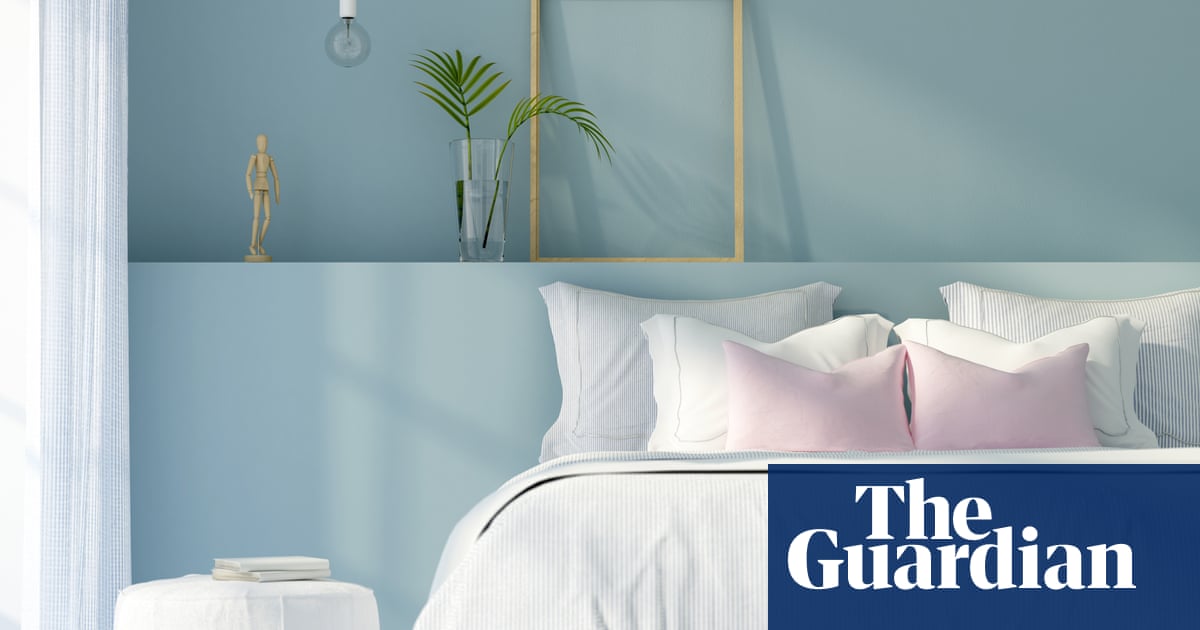There is a lot of information online about what makes good bedding. Dig into it, however, and you’ll see that most advice comes from the bedding brands themselves, making it tricky to sort facts from marketing hype.
To cut through the noise, we asked independent experts to help demystify some of the most common bedding questions, from decoding thread count to unpacking bamboo’s sustainability credentials. We heard from technical textile consultant Beverley Carter and textile expert and fashion consultant Sarah Denise Cordery. We also consulted sleep gurus James Wilson, AKA the Sleep Geek, and Max Kirsten, known as the Sleep Coach, to find out what has worked for their clients. For a beauty professional’s take on the benefits of silk bedding, we turned to skincare specialist Dr Kemi Fabusiwa.
For those more subjective queries – the flat v fitted sheet debate, or whether to go Oxford with your pillowcases – we consulted interior design professionals for an insiders’ take. Thirteen of them also shared their favourite bedding brands with the Filter.
Which material is best?
The consensus is that no one material is “best” – it’s about what’s right for the individual. “It makes sense to go for breathable, thermoregulating materials that prevent overheating and feel nice on your skin,” says Kirsten. His preference is cotton or bamboo, but some of our interior designers swore by linen.
Cotton is the most common bedding material, and all our experts recommend that if you do plump for it, look for the 100% sort for maximum comfort and breathability, particularly if you’re a hot sleeper. A few factors will affect how cotton feels: the quality of the threads used, the ply (the number of single threads twisted together), the type of weave and the treatment of the cotton. Then there is the thorny issue of thread count to unpick.
Is a higher thread count better?
“If you took a magnifying glass to one square inch of fabric, then counted the number of threads going vertically and horizontally, that would give you the thread count,” says Cordery. “It’s like the muscle of the fabric; the more thread you’ve got there, the heavier and smoother the material will be.”
Generally, you’ll see bedding marketed from 200 thread count up to 1,000-plus. But these claims can be misleading, says Cordery, since quality is dependent on the use of single-ply threads. She explains that some companies cheat the system by using two-ply (or even three- or four-ply) instead. “These are shorter threads and aren’t as high quality; they’re twisted together, which means the thread count will be doubled, but the fabric won’t be as strong.” So, a two-ply 300-thread-count product could be marketed as 600 and may feel slightly thicker but, Cordery warns, could bobble more easily – and no one wants bobbly sheets.
How can you tell if the threads are one-ply or not? With difficulty, as it’s not information we found readily available from brands. Cordery recommends feeling the fabric and checking if it starts to bobble when rubbed if you’re buying in-store. If the thread count is suspiciously high and the price seems too good to be true, it probably is. After all, says Cordery, “it’s very difficult to get 1,000 threads in a square inch of fabric unless it’s a very fine thread.”
Expect to pay £100-160 for a double high-thread-count sheet from mid-range retailers. In contrast, we found sheets marketed as 1,500 thread count for less than £20 on Temu and AliExpress.
And even if bedding is single-ply, 100% cotton and the thread count claims are legitimate, Wilson says a high thread count may not be the best solution for everyone: “Some people claim a higher thread count makes the cotton less breathable and can make you hotter in bed.” And if affordability and easy care are the top priorities, there are plenty of good-quality cotton-rich blends around, which will be cheaper than pure counterparts, quicker to dry and crease less easily.
Is Egyptian cotton better than cotton from anywhere else? If so, why?
Egyptian cotton has benefited from very effective marketing in recent years, but not all bedding carrying the name is equal. The thing to look for is “long-staple” cotton. Giza cotton, a variety grown only in the Nile valley, is known for its long, fine fibres and is touted as the most premium. “There are fewer breaks in the thread and that translates to a soft, long-lasting fabric that ages very well.”
That’s not to say other countries can’t grow long-staple cotton fibres – Pima cotton, for example, which grows in Peru and the south-west of the US – but all our experts concur that 100%, one-ply Giza Egyptian cotton is extremely high quality and can reach those high thread counts without the material feeling too thick or rigid. As you would expect, the price tag reflects this.
Percale v sateen weave
The weave type also affects the feel of cotton and influences the thread count. You’ll see cotton bedding categorised as sateen or percale. “A sateen weave is more densely packed together, so it will feel silky and have a lustre to it,” says Cordery. It will have a higher thread count and feel thicker and warmer than percale. A percale weave has more space between the threads and a cool, crisp feel. It may feel more lightweight and breathable and will dry quicker, but it also creases more easily than sateen.
Sustainability
You should be able to find clear information about a brand’s sustainability credentials on its website. Cordery recommends looking for the likes of the Better Cotton mark, an international sustainability initiative, and Oeko-tex certification, which ensures products haven’t been manufactured using harmful chemicals. If it’s organic cotton, look for the Gots, Global Organic Textile Standard, which certifies that the production process is environmentally and socially responsible.
Linen v cotton: which is best?
Some of our interiors experts swear by linen. Katherine Ormerod, author of Your Not Forever Home, loves it all year round, finding it cool in summer and “cocooning and warm” in winter. Banjo Beale, an Australian-born, Scotland-based interior designer and author of Wild Isle Style, is definitive: “Once you go linen you never go back.” He also praised the material for its breathability.
For others, cotton can’t be beaten. Charlotte Tilbury from Penrose Tilbury interior design doesn’t budge from high-thread-count bedding: “It has a comforting weight to it and drapes beautifully.” Interior designer Eva Sonaike says the “soft” and “luxurious” feel of cotton against the skin is unsurpassed by any other material.
Both linen and cotton are natural fabrics derived from plants, but what are the technical differences? “Cotton is harvested from the soft tufts of fibre that form after the cotton plant’s flowers die off,” says Carter. “They’re cleaned, combed and spun to yarn.” Linen, meanwhile, is derived from the flax plant. “It comes from the long fibres within the stems. For them to be usable, they’re steeped in water – retted – until the outer surface rots away and the fibre within separates.” The result is a looser weave that’s rougher to the touch than cotton and has that lived-in wrinkled appearance.
Both are durable and breathable, but linen has the edge here; it’s stronger and more breathable thanks to the looser weave. Plus, it’s particularly hypoallergenic. “Moisture breeds bacteria and linen wicks moisture away from your skin more effectively than cotton,” says Cordery. These qualities make it good for hot sleepers.
On the downside, linen is usually more expensive due to the more labour-intensive production process and because it doesn’t grow as widely as cotton. Some people may find it coarse, but it softens over time with washing.
What about bamboo?
Bamboo bedding has a soft, silky texture with significant hypoallergenic qualities; it’s effective at wicking away moisture and is antibacterial and antifungal. Wilson and Kirsten both report that bamboo works for their clients for whom temperature is an issue and those with skin conditions such as eczema. Carter reminds us that bamboo is a “quick-growing renewable material”, which is often why it’s trumpeted as a sustainable choice.
However, all our experts flag the use of potentially environmentally harmful chemicals in the manufacturing process. Price-wise, 100% bamboo sheets can be more expensive than some cotton versions, but are more affordable than, say, high-thread-count Egyptian cotton. Pure linen also tends to be pricier than bamboo.
For a similar silky, soft fabric that is kinder to the environment, Cordery recommends lyocell (sold as Tencel). It’s derived from wood pulp and is made in a closed-loop process, which recycles most of the water used in production, stopping harmful solvents leaking out into the environment. You may see bedding made with bamboo and Tencel blended with other textiles, such as cotton, so check the sustainability of those if that’s important to you.
after newsletter promotion
Do silk pillowcases actually improve skin and hair?
Silk is another material that’s garnered attention in recent years for its perceived skin and hair benefits. “Silk fibres are smooth and known to cause less friction on your skin and hair while you sleep,” says skincare specialist Fabusiwa, adding that using a silk pillowcase can reduce hair breakage and frizz from her experience. Silk doesn’t absorb as much moisture as cotton, so it can theoretically leave skin feeling more hydrated. “This means your expensive night cream stays on your face, where it belongs … I’m not saying silk is a miracle cure but in my opinion, it’s a worthwhile investment if you’re looking to give your hair and skin a little extra TLC.”
What temperature should you wash sheets?
As a starter for 10, always read the item’s care instructions.
Many experts said they wash their bed linen at 40C or the eco-standard 30C. However, Cordery recommends being extra careful with more delicate fabrics, such as bamboo: “Opt for a cold, gentle wash so it lasts as long as possible.” More durable cottons, she says, can be washed at up to 60C, particularly if you’re a hot sleeper and sweat a lot.
Flat v fitted sheets
Our interiors experts are overwhelmingly in favour of fitted sheets with elasticated sides to help them stay in place. If you have a particularly chunky mattress and topper, look for deeper options (usually about 40cm). Jessica Horton, interior designer and founder of Deorling, is a rare flat-sheet fan: “I prefer them for versatility and ease of tucking,” she says. Others said that while fitted is their go-to, they like to have a flat one to hand for warmer summer nights.
Oxford v standard pillowcases – what’s the difference?
Generally in the UK, we see two types of pillowcase: Oxford, which has an extra fabric border of about 5-10cm wide, and standard, which fits snugly around the pillow. (Note that a standard case is sometimes called a “housewife pillowcase” when it has an inside flap on the end. The name comes from the Housewives Cooperative of Bolton, which developed the flap solution in the late 19th century to help pillows stay in place.)
Tilbury is an Oxford advocate. “It’s like a little frame around the humble pillow, which adds a real elegance to the bed setup.” Athina Bluff of Topology Interiors is in the anti camp: “That flappy border is just impractical for styling.” Others use a combination of both.
How many pillows should you sleep on?
NHS guidance says a single pillow is preferable to support the head and neck and help with spine alignment while sleeping. All our designers said they opt for two pillows when the bed is made up – a hotel-style combination of one firm and one soft was a popular choice – although if you are prone to aches and pains, maybe emulate the cohort who admitted that the second was just decorative and cast aside at night.
How do I know what size bedding I need?
If you bought your mattress in the UK and buy your bedding from here, sizes will correspond to your mattress size (single, double, king and super king). However, continental Europe, US and Australia, among others, have different standard sizes, so always check the size guide if buying from an overseas-based brand.
Should I upsize my duvet, such as using a super-king duvet on a king-sized bed?
This was a divisive issue. Beale, a sizer-upper, takes an innovative approach: “Nothing upsets me more than a duvet that doesn’t dangle over the edge, so I always supersize … two duvets inside the cover for that sumptuous look.” Others said they liked the draped effect of a larger duvet, while some dismissed it. “A double on a single makes me feel weird,” says Tilbury.
Bluff applies her super-sizing to pillows instead. She opts for super-king pillows on a king bed. At 55 x 90cm, they’re longer than a standard king. “It fills the space between pillows, giving a plush, well-styled look.”
Do you need a separate duvet for summer and winter?
“This is very individual,” says Wilson. “Some people have a light duvet all year round as they sleep hot, while others will swap through the seasons as they feel the cold more. If you do feel the cold, Kirsten points out that switching to a higher-tog duvet in winter “can help you feel snug without resorting to keeping the heating high, which can lead to overheating – and higher bills.” Wilson is an advocate of separate duvets for couples with different temperature preferences.
Most of the designers we spoke to swapped duvets in winter and summer. Horton opts for a 4.5 tog duvet in summer and a 13.5 tog duvet in winter for extra warmth and cosiness. Ormerod, meanwhile, said she sticks with a mid-level one all year round due to lack of storage space.
Stay stylish while you sleep with our pick of the best women’s pyjamas and the best men’s pyjamas










